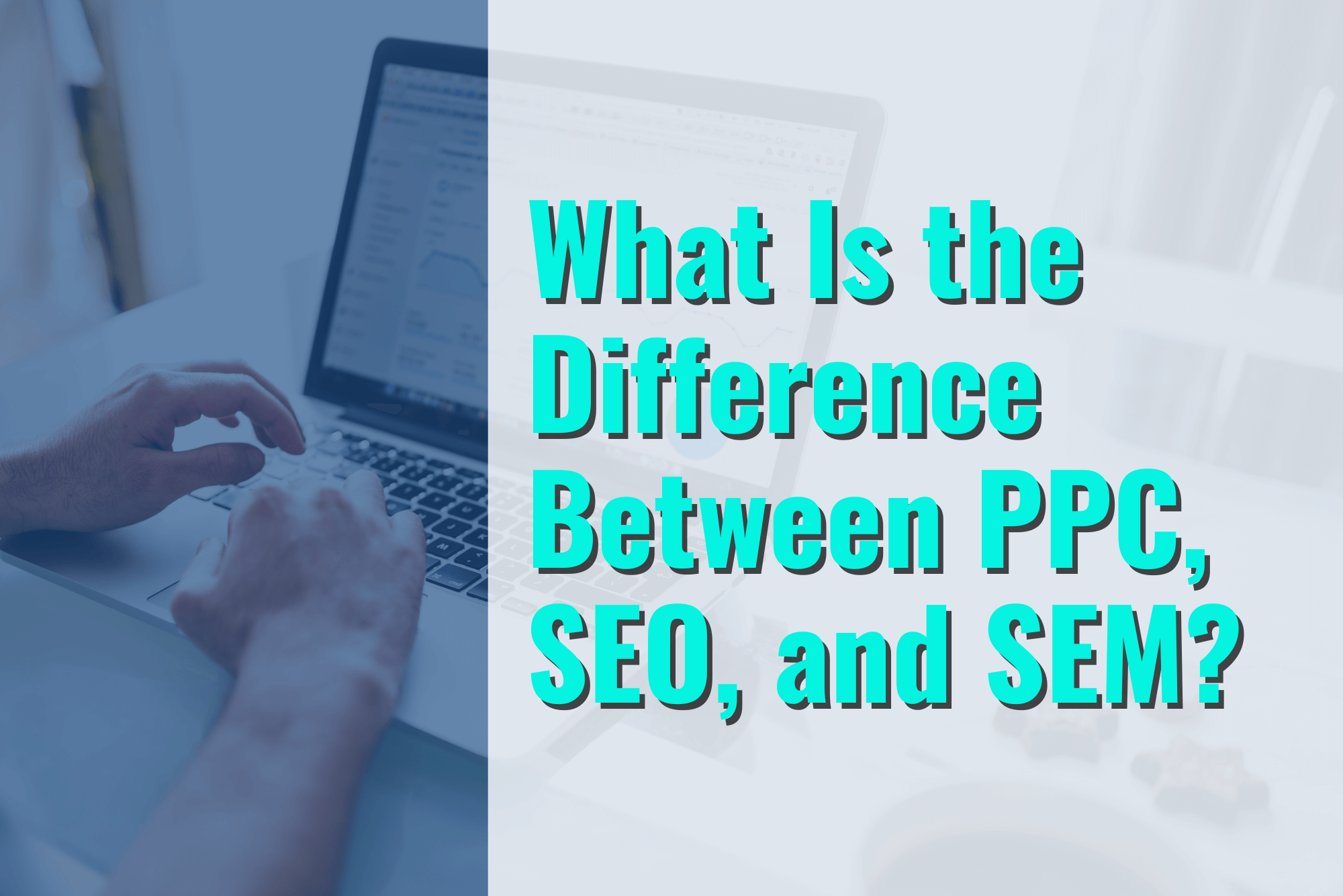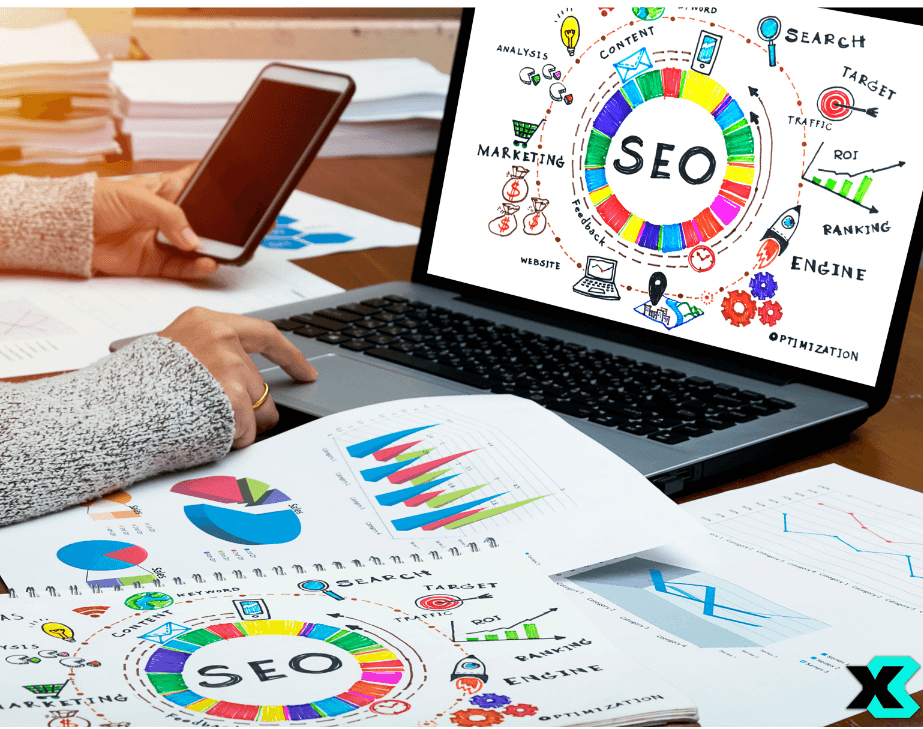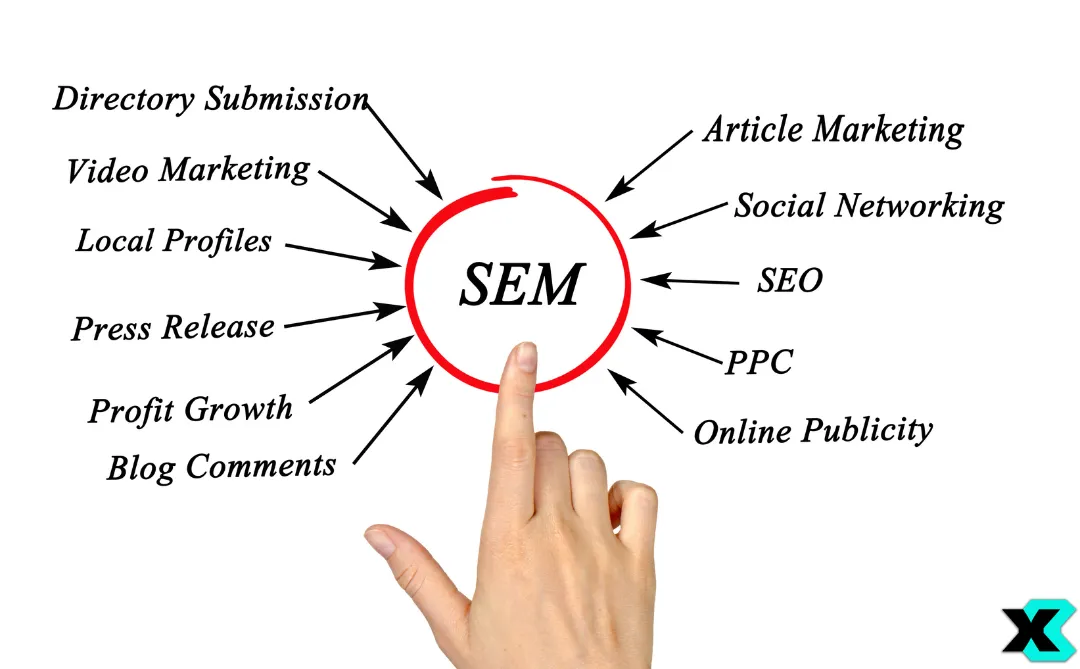
What Is the Difference Between PPC, SEO, and SEM?
In today’s digital economy, small businesses must have a strong online presence to succeed. However, not all business owners have the time or expertise to create effective digital marketing strategies. The goal of digital marketingis simple: to help businesses achieve more customers, more results, and more revenue. A robust digital marketing strategy can include various techniques, including Pay-Per-Click Advertising (PPC), search engine optimization (SEO), and Search Engine Marketing (SEM), all of which are similar, but very different from each other.
Understanding the differences between PPC, SEO, and SEM is crucial for businesses looking to optimize their online presence and improve their digital marketing efforts. While they share some similarities, they are distinct strategies with different goals, techniques, and outcomes. PPC stands for Pay-Per-Click, a digital advertising model where advertisers pay a fee each time one of their ads is clicked. SEO stands for Search Engine Optimization, which is the practice of optimizing a website to rank higher in search engine results pages (SERPs) organically. SEM stands for Search Engine Marketing, which refers to the promotion of websites through paid advertising and search engine optimization.

Understanding PPC: Definition, Benefits, and Strategies for Success
Pay-Per-Click (PPC) is a widely used digital advertising model that allows advertisers to pay a certain fee each time a user clicks on one of their ads, in order to drive traffic to their websites and enhance their visibility. To make this model work, advertisers place ads on websites and search engine results pages and bid on relevant keywords to their business and target audiences. When users search for those keywords or navigate to relevant websites, the ads appear, and advertisers are charged once a user clicks on the ad.

PPC advertising has several benefits, including:
●Increased Visibility: PPC ads are shown at the top of search engine results pages, increasing visibility and the likelihood of clicks and conversions.
● Targeted Advertising: Advertisers can target specific keywords and audiences, ensuring their ads are seen by the right people.
● Measurable Results: PPC advertising provides detailed analytics, allowing advertisers to measure the success of their campaigns and make data-driven decisions.
Examples of PPC ads include:
- Google Ads: Text or image ads that appear at the top of Google search results pages, targeting users who are searching for specific keywords or phrases.
- Facebook Ads: Targeted ads that appear in Facebook feeds or on the side of the page, aiming to reach specific audiences based on their demographics, interests, and behaviors.
- Display Ads: Digital ads that appear in various forms, such as banners, videos, or pop-ups, on websites and social media platforms to increase brand awareness and promote products or services to a wider audience.
What is SEO?
SEOis a strategy used to improve the visibility and ranking of websites or web pages on search engine results pages (SERPs). This approach includes different techniques focused on enhancing website content, structure, and user experience to make it more relevant and appealing to search engine algorithms. The process of SEO involves analyzing and optimizing various factors that search engines use to rank websites, such as quality of content, relevant keywords, backlinks, and user experience. Through this optimization, SEO can significantly help improve a website’s visibility and ranking on search engine results pages.

There are several benefits to using SEO, including:
● Increased website traffic: By optimizing a website for search engines, it can attract more organic traffic from people searching for related topics or products, helping increase conversion rates and revenue.
● Cost-effective: SEO can be a cost-effective way to increase website traffic and revenue compared to other advertising methods.
● Long-term results: SEO can provide long-term results, with improvements to a website’s ranking often lasting months or years.
There are several strategies used in SEO, for example:
- Keyword driven content: Creating engaging content that is relevant to the target audience and optimized for search engines by using relevant keywords to improve visibility.
- Link building: Creating high-quality backlinks to a website from other reputable websites to improve authority and visibility in search results.
- Technical optimization: Improving website performance, load speed, mobile-friendliness, and other technical factors that can affect SEO.
What is SEM?
SEM is a digital marketing strategy aimed at enhancing website visibility on SERPs through a combination of PPC and SEO. This is achieved by bidding on relevant keywords to place ads at the top of search engine results pages and improving organic ranking through SEO techniques.

Benefits of incorporating SEO and PPC into an SEM strategy include:
● Enhanced brand recognition: By appearing at the top of search engine results pages, SEM can improve a website’s brand recognition and establish it as an authority in its industry.
● Improved user experience: By optimizing website content and structure for search engines, SEM can improve the user experience and lead to higher engagement rates.
● Measurable results: SEM provides detailed analytics, allowing advertisers to measure the success of their campaigns and make data-driven decisions.
Examples of SEM strategies include:
- Integrated campaign management: Combining multiple SEM tactics, such as PPC, SEO, and social media advertising, to achieve a coordinated and effective digital marketing campaign.
- Audience segmentation and targeting: Using data and targeting to reach specific audiences with relevant messaging and content, to generate qualified leads and boost conversions.
- Landing page optimization: Improving landing pages through design, copy, and testing, to increase conversion rates.

So, What’s the Difference between PPC, SEM, and SEO?
Deciding which strategy to use for your business depends on your goals and budget. When we design customized campaigns at X3, some factors we consider are:




Contact Us Today!
Understanding the differences between PPC, SEM, and SEO is crucial for any business that wants to succeed in digital marketing. While all three strategies can drive traffic and increase conversions, they each have their own unique benefits and drawbacks. PPC is a quick way to get your ads in front of your target audience but can be expensive in the long run. SEO is a long-term investment that can pay off in organic traffic and increased brand awareness. SEM combines both PPC and SEO to maximize visibility on search engine result pages.

At X3 Marketing Group, we specialize in helping businesses with custom digital marketing strategies that meet their unique goals and needs. Our team of experts works with you to determine the best approach for your business and revenue goals.
Contact ustoday to learn more about how we can help your business succeed online.
Additional Resources
●Related blog posts: Visit our blog for more information on digital marketing, SEO, web design, social media marketing, email marketing, and more.
●Case studies: Read about our clients’ successes and see how we have helped businesses like yours achieve their digital marketing goals.
●Industries: Check out the Industries we work with, to see how we can utilize our experience to help you grow in your industry.



